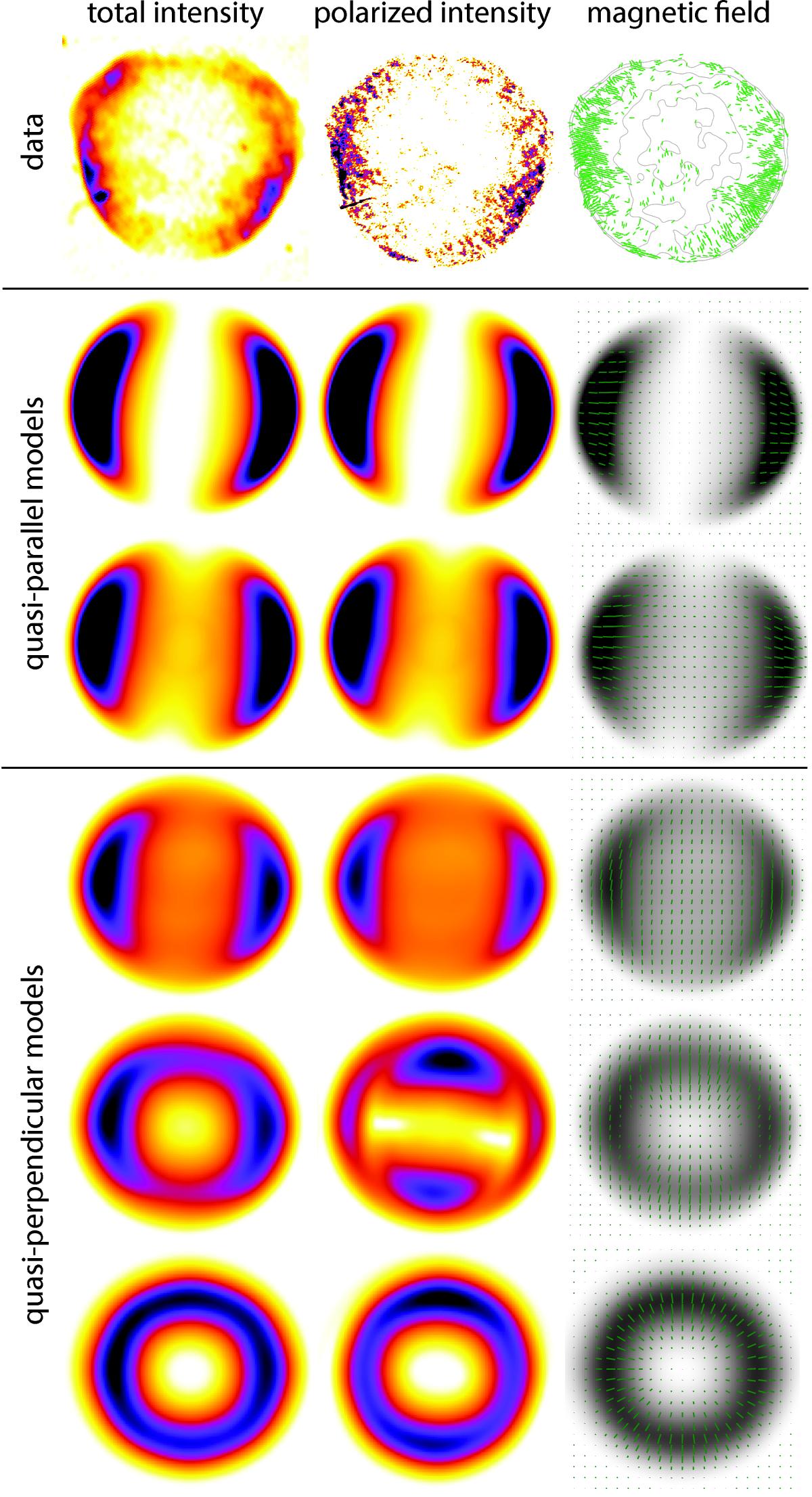Fig. 3

Observations of G327.6+14.6 (SN1006) compared to a selection of grid-based models. The magnetic field is defined by the components Bx (line-of-sight component), By (horizontal component), and Bz (vertical component), where the ratio between the By and Bz-components determines the orientation of the bilateral symmetry axis. Top row: observations of SN1006. Left: Stokes I total intensity (MOST). Center: polarized intensity (Reynoso et al. 2013). Right: magnetic field vectors shown with total intensity contours in the background (adapted from Reynoso et al. 2013). Second row: quasi-parallel model with Bx = 0.03μG, By = 1.0μG, and Bz = 0.12μG. Third row: quasi-parallel model with Bx = 0.55μG, By = 1.0μG, and Bz = 0.12μG. Fourth row: quasi-perpendicular model with Bx = 1.28μG, By = −0.12μG, and Bz = 1.0μG. This is very close to the case at the location of SN1006 in the JF12 GMF model. Fifth row: quasi-perpendicular model with Bx = −3.84μG, By = −0.12μG, and Bz = 1.0μG. Bottom row: quasi-perpendicular model with Bx = −12.5μG, By = −0.12μG, and Bz = 1.0μG. The models are arranged as the data, with far left: Stokes I total intensity; center: polarized intensity, and right: magnetic field vectors shown over total intensity emission.
Current usage metrics show cumulative count of Article Views (full-text article views including HTML views, PDF and ePub downloads, according to the available data) and Abstracts Views on Vision4Press platform.
Data correspond to usage on the plateform after 2015. The current usage metrics is available 48-96 hours after online publication and is updated daily on week days.
Initial download of the metrics may take a while.


